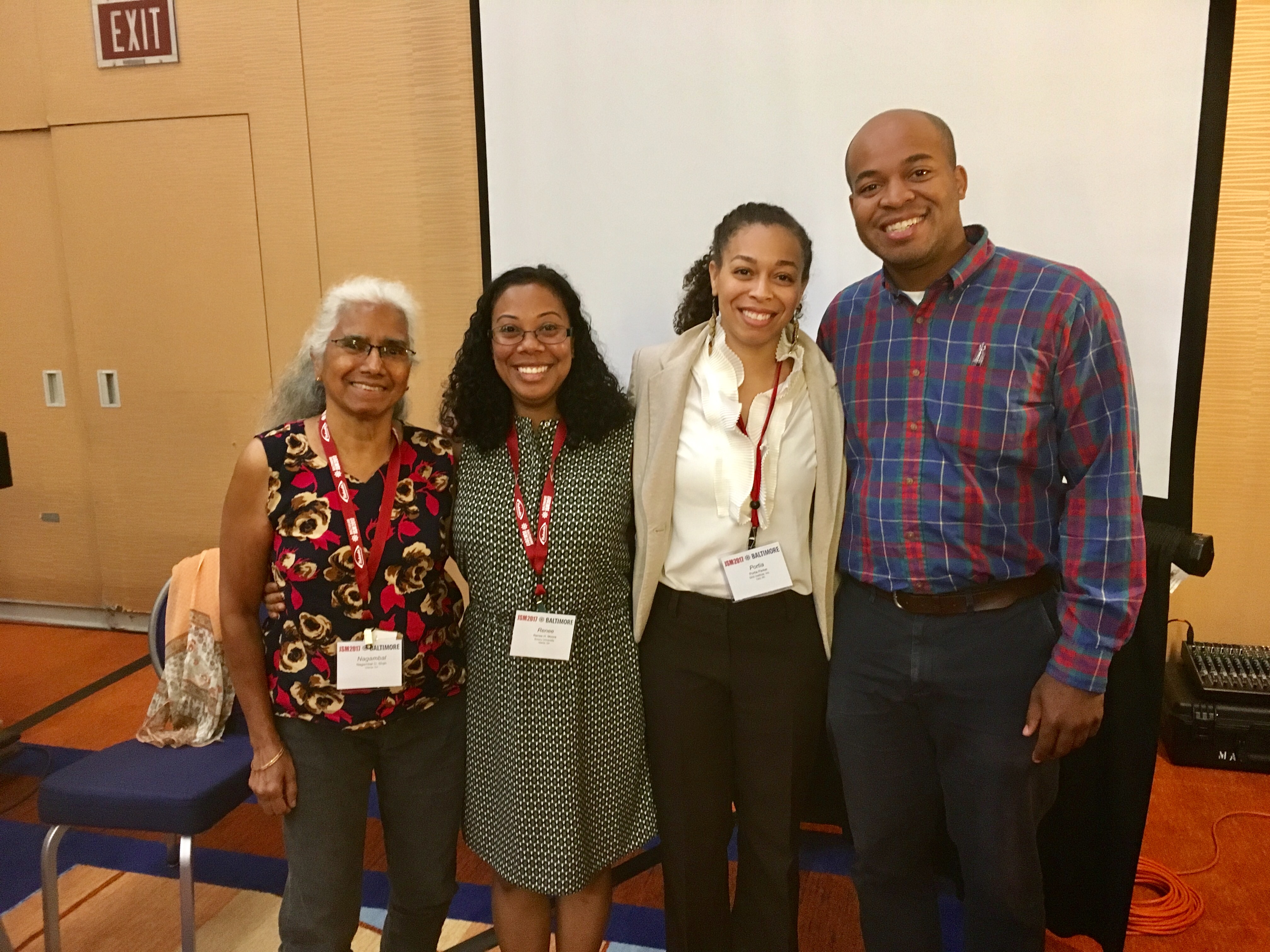Adrian Coles, Jesse Chittams, and Dionne Swift
Why is mentorship so important? As a tool, it greatly assists junior individuals in making quality decisions that will lend themselves to future success. But that is a limited perspective. Effective mentorship is also a conduit through which excellence is conveyed, and that benefits not only the mentee, but also the system in which that individual operates.
The ASA’s Diversity Mentoring Program (DMP) advances our profession!
Four Generations of Mentoring
In the midst of the excitement from connections being made, enlightening panel discussions, and networking by program participants at this year’s DMP, which took place at JSM 2017 in Baltimore, one moment stood out.
Nagambal Shah, professor emerita at Spelman College, is the founder of the annual ASA StatFest and has been one of the consistent leaders of the DMP since its inception in 2009. In 2010, she was elected an ASA Fellow in honor of her outstanding career as an educator and service to our profession.
Shah mentored Reneé Moore, director of biostatistics collaboration core at Emory University and current chair of the ASA’s Committee on Minorities in Statistics. This year, Moore was elected an ASA Fellow in honor of her career as a collaborative researcher and educator and service to our profession.
Both these leaders have enjoyed great careers from a personal perspective, but more than that, they have tirelessly served to advance our profession, which benefits each of us. They are an example of contagious excellence. They embody the key strengths of the DMP: community, collaboration, and commitment.
And it appears they are passing those down to future generations.
Moore mentors Portia Parker, a graduate of North Carolina State University, who is starting a career at SAS Institute, Inc. Like her mentor, she is active in professional service. This year, Parker began a mentoring relationship with Michael Sampson, who is a first-year graduate student at NYU.
No other moment better demonstrates the value of effective mentoring and fostering greater participation in our profession by members of diverse groups. Given the harmony of sexes, racial groups, and age groups in this photo (and heights), it’s fair to suggest we truly are better together. This is community. This is legacy.
Program Summary
This year’s Diversity Mentoring Program partnered 18 students and early-career professionals with leaders and professionals from government, industry, consulting, and academia in 1-to-1 mentoring relationships.
In addition, participants benefited from panel discussions that addressed topics such as effective mentoring, career paths, and emotional intelligence. Participants also took advantage of the intimate networking environment that included talent acquisition specialists from sponsoring organizations.
The chair of this year’s DMP committee was Dionne Swift, vice chair of the ASA’s Committee on Minorities in Statistics.
If you are interested in participating in the next Diversity Mentoring Program or the ASA’s Committee on Minorities in Statistics’ other key initiative, StatFest, please check the Committee on Minorities in Statistics webpage.





Leave a Reply